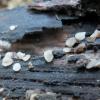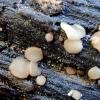
12-01-2026 22:02
Ethan CrensonHello all, I am hoping someone will have some ins

11-01-2026 20:35
Hello.A very tiny pyrenomycete sprouting sparsely

12-01-2026 05:24
 Danny Newman
Danny Newman
Cyathicula coronata on Urtica dioicaCataloochee Di

15-12-2025 11:49
 Danny Newman
Danny Newman
ITS sequences from the following two collections B

09-01-2026 17:41
Arnold BüschlenHallo, F. dilatata wird von vielen Bryoparasiten

10-01-2026 20:00
Tom SchrierHi all,We found picnidia on Protoparmeliopsis mur

07-01-2026 22:22
 Danny Newman
Danny Newman
Tatraea sp. on indet. hardwood The Swag, Great Sm

10-01-2026 01:18
 Danny Newman
Danny Newman
cf. Neovaginatispora fuckelii on indet. shrub Pre

07-01-2026 10:24
 Danny Newman
Danny Newman
Pezicula sp. on indet. hardwood Appalachian Highl

09-01-2026 10:08
 Blasco Rafael
Blasco Rafael
Hola, en el mismo habitat que la anteriorRetamaDia
 Bonsoir,
Bonsoir,Sur bois mort de feuillu. Apothécies sessiles, cupuliformes puis planes, jusqu'à 2,5 mm de diamètre. Blanchâtre, devenant subtilement rosé en vieillissant.
Ascospores : 16-22 x 5-7 µm, fusiformes, avec une face souvent plus bombée que l'autre donnant un aspect un peu courbé, hyalines, entièrement garnies de guttules réfringentes.
Asques : 110-130 x 9-12 µm, cylindriques, inoperculés, avec crochet, à appareil apical amyloïde de type Hymenoscyphus, contenant huit spores unisériées.
Paraphyses : grêles, dressées, cylindriques, hyalines.
Excipulum ectal : de textura globulosa-angularis.
Je classerais cette récolte dans le groupe Hymenoscyphus/Cudoniella mais je n'en vois aucun avec ces remarquables spores.
Merci d'avance !
Andgelo



Peux-tu s'il te plait me confirmer que les deux dernières photos de spores correspondent bien à Tatraea dumbirensis ?

But I have no other idea. The apical ring looks o.k. The paraphyses do not seem to contain strikingly refractive vacuoles.
Maybe you do not know the article about that genus? I send in to your mail address.
Zotto


Je suis tombé sur une autre récolte de cette espèce, à 30 km de la première.
Ce sont toujours des spores exceptionnellement droites...


J'ai gardé un exciccata de la récolte initiale.


Bonsoir les amis,
I have just found the very same on dead Quercus ilex on Ile de Ré (decorticated and still quite hard wood) . Typical IKI reaction for Tatraea , straight spores never reniform and the same size as Andgelo's collection. A striking globulosa ectal
Did Luis give any further information on this collection ?
I saw T dumbirensis several times and I think this is different , though probably close.
Pictures to come, I hope
Amitiés
Michel

L. Quijada: - Apo up to 2 mm diam., 0,5 mm high. Excipulum with two layers. Outer layer of globose to angular texture, inner layer parallel to more or less intricate, cells non-guttulate, except for protuding cells at margin with one pale-yellowish VB, walls not thickened.- Asci *137-164 x 12-14 um, +108-124 x 9.3-12 um. Apical ring +1.8-3.7 um wide. - Ascospores *15.5-19 x 4.8-5.7 um, +13-16 x 4.3-5.3 um, multiguttulate (LBs, 75-90%), in dead state usually with one big guttule.- Paraphyses in apical cell multiguttulate (VBs, pale-yellowish to hyaline), apical cell 46-55 x 2.8-3.3 um, cells bellow 16.5-31 x 2.5-3.3 um.

I made a collection in november 2016 at Villiers-Couture (limit of dept. 17-79) that I nammed T. dumbirensis. Apos were hidden in a caivity of a trunk fallen on the ground.
spores (17,53)17,61-17,78-21,46(22,20) x (6,75)6,79-7,65-7,72(7,75). I have to look for the date of collection.
François

Francois, would be good to look also for the wood anatomy, could be Quercus? It looks like broad radial rays, so when the wood is ring-pored it is sure.
Patrice

Is it possible that this species does not form a distinct stipe? In T. dumbirensis a stip is usually present and photos are not rarely taken from the side.


You mean a second character which would separate it from dumbirensis ?
I think that spore size and figures are.
Here are a few notes on my collection MH 11218 :2 12 2018
France Charente Maritime Ile de Ré St Martin de Ré, Les Maraises . In wood of Q. ilex dead branch decirticated and still veru hard wood. Apos white becoming greyish , diameter mostly 1-2,5 . 4mm) about 1,3 mm thick. stipe short . Chair soft, not gelatinous.
EE T. globulosa , cells -7-14 evoluting to T? angularis on the flanks surfaces . (7-15 x 10-20)
EM T intricata of long hyphae rather subparallel : 2-5,5 x 20-50 µm
Spores mostly 16-19 (20) x 5,5-6 , OCI 4,5 , fusoid to slightly clavate or shlthly ''bryosyphusoid'' but never reniform. One-septate when overmature
Ascus H+, IKI + typical for Tatraea with Hymenoscyphus canal and diffused reaction nearly filing the ascus chamber. PS 55 - 60 . Biseriate spires 135-145 (150) x 10,5-11 (living state)
Paraohyses x 2-3,5 , filled with VBs obviously visible in CRB. Marginal cells larger (4-55, with no VBs .
AMitiés
Michel

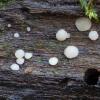
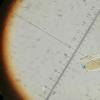
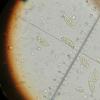

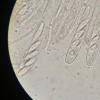

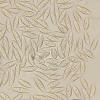
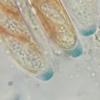
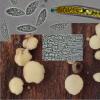
 Doc2-0009.pdf
Doc2-0009.pdf